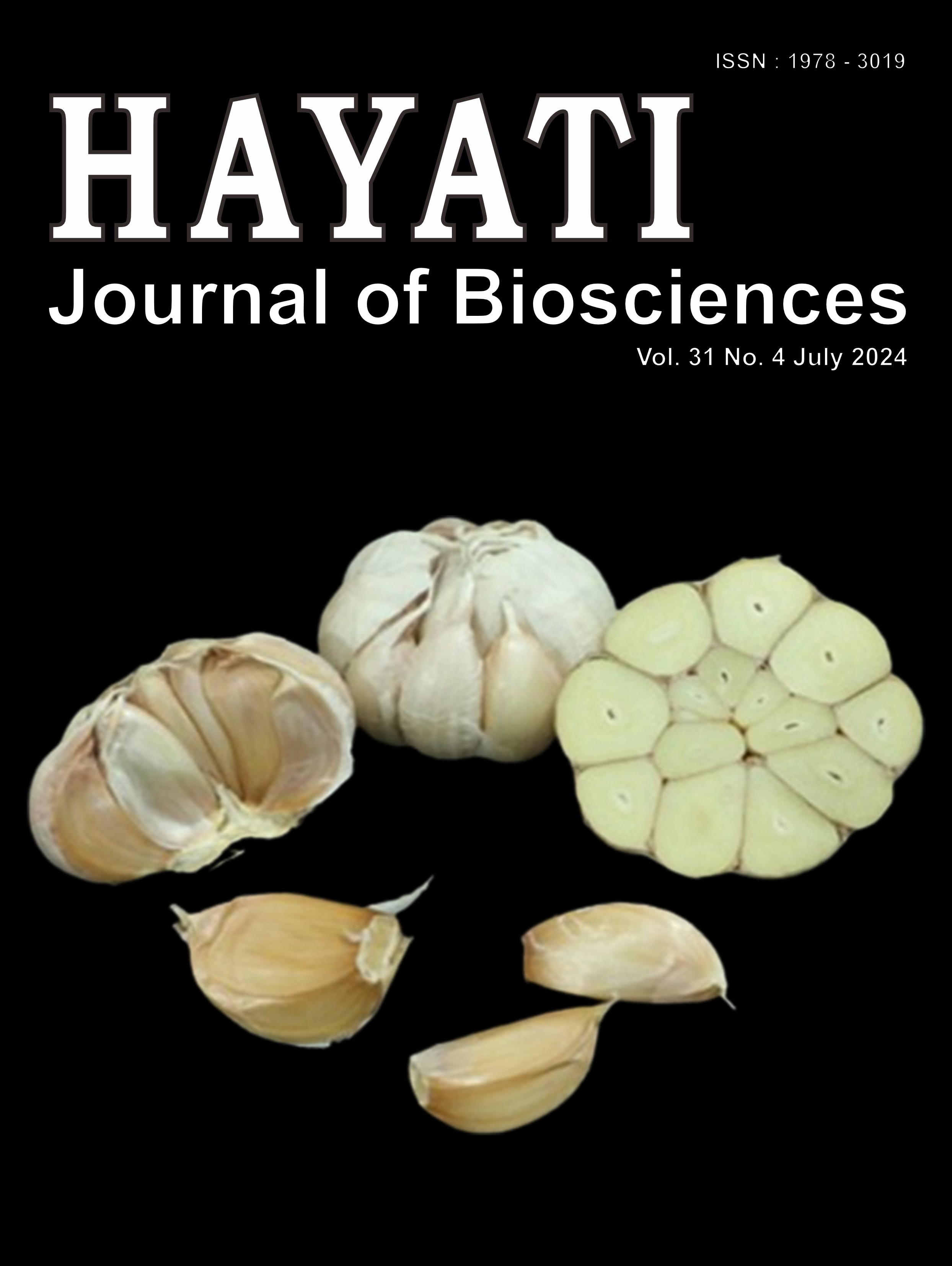Successful Primer Picking and Pooling for the Design of Multiplex PCR Primers Specific to Pork, Beef, Chicken, and Rat DNA
Abstract
DNA markers and Multiplex-PCR have emerged as methods for species detection in processed meat products. The primary objective of this study is to design multiplex primer sequences for pork, rat, beef, and chicken, generating distinguishable amplicons through agarose gel electrophoresis for halal detection in processed meat products. Primer design involved utilizing mitochondrial genomic data and the NCBI-Primer BLAST site to obtain specific pork and beef primer sequences. In silico simulations, including single and multiplex-PCR, were conducted using Primer Pooler. In vitro validation encompassed Single-PCR and Multiplex-PCR annealing temperature optimization, using samples of chicken, beef, pork, and rat as well as processed meat products like meatballs, sausages, and nuggets. In vitro validation demonstrated that the halal marker gene's multiplex primer efficiently amplified the target sequence, specifically at the optimal annealing temperature of 58°C. Amplicons from beef (1,217 bp), pork (860 bp), rat (622 bp), and chicken (272 bp) primers could be distinguished on a 1.5% agarose gel. The study's results can aid in cost-effective and rapid halal testing and authentication of processed meat products, offering advantages over PCR with a single primer.
Downloads
Copyright (c) 2024 Diah Kusumawaty, Nurul Faridah, Azzania Fibriani, Didik Priyandoko, Hanina Dzikrina, Diah Puspitasari, Trina Ekawati Tallei, Any Aryani

This work is licensed under a Creative Commons Attribution-NonCommercial 4.0 International License.
HAYATI J Biosci is an open access journal and the article's license is CC-BY-NC. This license lets others distribute, remix, tweak, and build upon author's work, as long as they credit the original creation. Authors retain copyright and grant the journal/publisher non exclusive publishing rights with the work simultaneously licensed under a https://creativecommons.org/


















.png) IPB University
IPB University Department of Biology
Department of Biology The Indonesian Biological Society
The Indonesian Biological Society 

